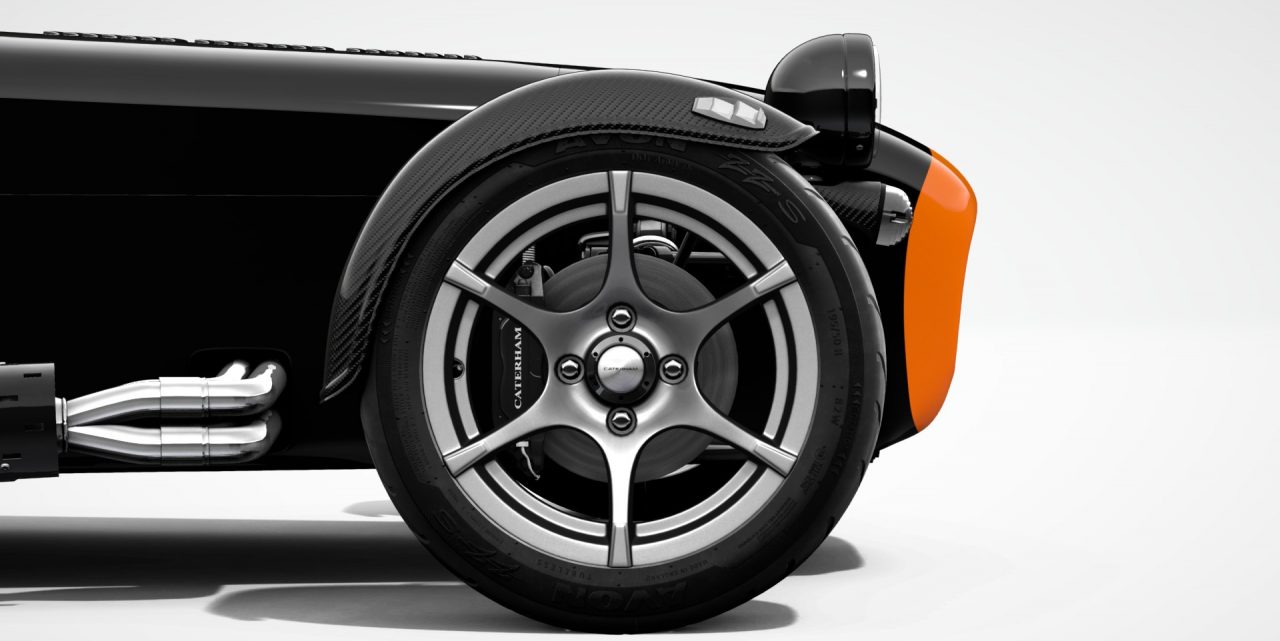
Harnesses: The harnesses have to be fitted before the seats as there is simply no access to the fittings once the seats are in place.
The harnesses are handed and should be installed so that the end with the red buckle is inboard (ie bolted to the transmission tunnel. There are two fixing points and the forward most position must be used if you have the Tillet bucket seats.
Caterham supply a 4-point racing harness as standard on the ‘R’ specification (made by Luke). The buckle also has provision for a crutch strap to create a 6-point harness. I think these are worthwhile as tightening the shoulder straps pulls the lap belts up toward your diaphram which is not good and overtightening the lap belts to compensate is uncomfortable.
The harnesses come supplied with the correct specification of bolts, washers and spacers to allow the belts to swivel once the bolts are tightened up. Instructions are provided with the harnesses and installation is fairly easy. Once the bolts were torqued to specification and paint marked it was time to move onto the seats.
Seats: I have the Tillet padded race seats which are basically a carbon fibre bucket seat with two sections of thin padding. I find them really comfortable.
The seats are a very tight fit in the chassis and whilst there is nothing complicated about their installation it is an awkward job where two pairs of hands really help, particularly in the final stages.
The first step is to fit the runners:
- The drivers side runners are adjustable in terms of fore/aft movement but the release lever fouls the lowered floor bracket. After trying to bend it in order to get the necessary clearance I gave up and simply cut it short and put one of the rubber bungs that came wiht the heater over the cut end. I can reach under the seat with my fingers to lift the lever and release the mechanism but the movement is so small (8-10cm) and I will be the only driver so I think I will leave the seat in the rear most position and forget about it.
- The passenger seat is mounted on two fixed aluminium runners that bolt to the seat.
- Both passenger and drivers seats require thick nylon spacers between the seat and the runner.
Caterham have recently changed the fixing pack for these seats which initially caused some confusion. The new illustrated manual shows the runners are bolted through the floor pan using cap head bolts and nyloc nuts. However, I was supplied with two fixing packs (one for each seat ?) that contained a range of fittings including 8 black countersunk bolts and 8 large countersunk washers. It was not obvious how to fit the seats wiht the 16 countersunk bolts and washers and other fittings but a quick consultation on the Caterham Tech Talk Facebook page demystified everything.
- Caterham had sent me two fixing packs – but I only needed one pack for both seats.
- The new method of fitting the seats does away with the cap-head bolts and nylocs and uses the countersunk bolts the pass up from the ground into captive nuts in the seat runners.
Once the mystery was solved it was a relatively straightforward to fix the seats with the only difficulty being locating the captive bolts in the seats. This is where a second pair of hands is really helpful to manouvre the seat around from the top whilst I tried to line up the bolts from underneath. Once one bolt is loosely fitted the others tend to go in fairly easily.
I think this new arrangement is easier, neater and reduces the chances of the protruding seat bolts grounding out on speed bumps.



